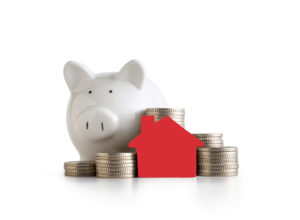
When it comes to putting money away to buy their first home, the federal government’s ‘tax-free in, tax-free out’ First Home Savings Account aims to give Canadians a helping hand.
As of April 1st, Canadians aged 18 or older who are purchasing their first home are eligible to enroll in a tax-free First Home Savings Account (FHSA). Introduced in the 2022 federal budget, the FHSA combines elements of a Tax-Free Savings Account (TFSA) and a Registered Retirement Savings Plan (RRSP), allowing users to make tax-deductible contributions and tax-free withdrawals from the account for the purposes of saving for a home.
Am I eligible for the FHSA?
In order to open an FHSA, users must be at least 18 years old and a Canadian resident. Account holders must also be a first-time homebuyer — someone who has not owned a home and lived in it during the calendar year before the account is opened, or at any time during the prior four calendar years.
An FHSA can be used for a maximum of 15 years, and stay open until December 31st in the year that the account holder turns 71 years old. Users cannot contribute to their spouse or common-law partner’s FHSA.
How much can I contribute to my FHSA?
FHSA holders can contribute an annual maximum of $8,000 into their account, with a lifetime contribution limit of $40,000. Unused contribution room can be carried over to the next year up to a maximum of $8,000. Carry-forward amounts start accumulating after the user opens the FHSA for the first time. Only the account holder can claim an income tax deduction for contributions made in a particular taxation year.
It is possible to have more than one FHSA open at a time, but the total amount that an individual can contribute to all of their FHSAs cannot exceed their annual and lifetime contribution limits. Similar to a TFSA, a 1% tax is applied on over-contributions to an FHSA for each month that the excess amount exists in the account.
What are the benefits of the FHSA?
An FHSA marries together the concepts of a TFSA and an RRSP in one account.
Contributions to an FHSA, like an RRSP, are tax-deductible. Additionally, any withdrawals made for the sake of purchasing a home are non-taxable, similar to a TFSA, including any investment growth. Users can take advantage of a series of qualified investments in their FHSA, including mutual funds and publicly-traded securities, plus government and corporate bonds. Users can also set up a self-directed FHSA to manage their own portfolio.
What happens when I want to take money out of my FHSA?
If a user wants to withdraw funds from their account, there are a few things to keep in mind.
The account holder must be a first-time homebuyer at the time a withdrawal is made. The qualifying home must be acquired (or construction must be completed) no more than 30 days prior to the withdrawal, and before October 1st of the following year, with the intention of occupying the property as their principal residence within one year after acquiring it. Be sure to read carefully the definitions of a first-time homebuyer and a qualifying home.
If you wish to transfer money out of your FHSA to another account, you can do so to another FHSA, an RRSP or a Registered Retirement Income Fund (RRIF). Be sure to close your FHSA on or before December 31st of the year following your first qualifying withdrawal, when your participation period concludes.
To learn more about the First-Home Savings Account, visit Canada.ca.
